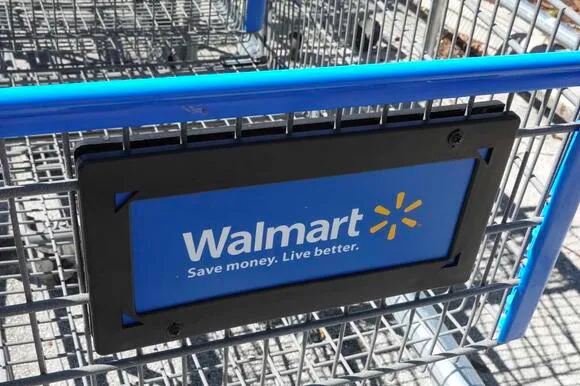Self-checkout kiosks, initially introduced during the height of the COVID-19 pandemic, were designed to allow for contactless shopping, reducing physical interaction and helping enforce social distancing. However, despite their initial appeal, these kiosks have quickly fallen out of favor, leaving both customers and retailers grappling with frustrations. Much like the now-ubiquitous QR code menus, which were once hailed as a convenient way to avoid physical menus, self-checkouts are increasingly seen as more of a hassle than a help. A prime example of this dissatisfaction was seen recently when a Walmart shopper was brought to tears after discovering that the only option to pay for her $500 worth of groceries was through a self-checkout machine.
The woman, who had been shopping with a newborn for over an hour, shared her frustration on social media. “I cried at a Walmart in Columbia today,” she wrote. “I was in there with a screaming newborn in my arms and a cart full of $500 worth of groceries, and self-checkout was the only option. I seriously considered walking out but then the hour and a half of shopping would have been for nothing,” she added, reflecting the distress many shoppers feel when faced with limited checkout choices during their shopping trips, according to The Sun.
Her ordeal didn’t stop at simply finding herself stuck at a self-checkout. She mentioned that she waited for 23 minutes because only two of the self-checkout machines were functioning. To make matters worse, the scan-and-go counters were down as well. She revealed that she “seriously considered” abandoning her cart but ultimately couldn’t bring herself to leave it behind. “I’m too much of a decent person to leave my cart full of items at the front, but I considered,” she said.
Self-checkout kiosks first appeared in American stores over 30 years ago, aimed at speeding up the process for customers and reducing instances of theft. While the technology initially met these goals to some extent, it seems to have created more problems than it solved over time. With the busy holiday season on the horizon, it seems customers are preparing for another wave of frustration as they head into stores. “Going to the grocery store used to be simple, and now it’s frustrating,” said Cindy Whittington, a 66-year-old woman from Fairfax, Virginia, in a recent interview with Fortune. “You’re paying more. You’re working harder to pay for merchandise at their store. And it’s become an ordeal to check out. I should get a 5% discount,” she added, speaking to the growing dissatisfaction among shoppers.
In response to these frustrations, Walmart introduced its Walmart+ service earlier this year, aiming to streamline the checkout process. Walmart+ offers members exclusive benefits like early access to sales, fuel discounts, and free home delivery for grocery orders. This service is designed to help customers avoid the headaches of in-store checkout lines altogether, particularly appealing to those who want to skip the self-checkout experience entirely.
As for the future of self-checkout, many retailers, including Walmart, are reconsidering their role in the shopping experience. While the technology promised convenience and cost savings, it has increasingly become a source of stress for both customers and store employees. With concerns over rising operational costs and the potential for lost revenue, businesses are exploring ways to strike a balance between technology and customer service.

A Walmart cart outside one of its stores | (Image Source: Getty Images | Photo by Joe Raedle)
In April of this year, Walmart took a significant step by removing self-checkout kiosks from several locations, including stores in Shrewsbury, Missouri, and Cleveland. These stores switched back to staffed checkout lines, reflecting a shift in strategy. However, despite this move, Walmart has no immediate plans to eliminate self-checkout options across all its stores. “We currently have no additional conversions to announce,” a spokesperson for the company told CX Dive, indicating that while some locations are adjusting their approach, self-checkout remains a fixture at many stores.
As shoppers continue to express their dissatisfaction, it remains to be seen whether more retailers will follow Walmart’s lead in rethinking the role of self-checkout in the modern shopping experience.


